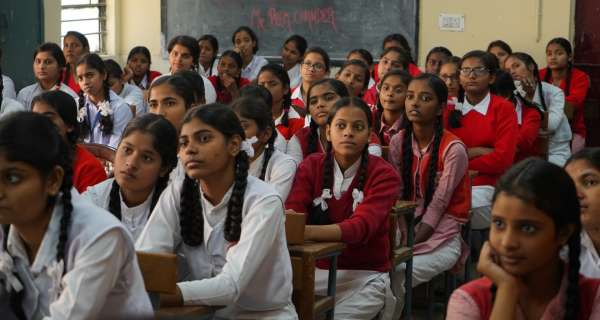Target 2.1: Universal access to safe and nutritious food
UN definition: "End hunger, achieve food security and improved nutrition and promote sustainable agriculture".
Prevalence of undernourishment - SDG Indicator 2.1.1
Definition: Indicator 2.1.1 is the "prevalence of undernourishment".
The prevalence of undernourishment is the share of the population with a caloric intake that is insufficient to meet minimum requirements for a healthy life. Minimum requirements vary by individual based on age, gender, weight, activity levels and so vary by country depending on the demographics of its population. Distributions for individuals are taken into account for this measure.
Goal: "End hunger" by 2030. This means eliminating undernourishment for all.
Prevalence of food insecurity - SDG Indicator 2.1.2
Definition: Indicator 2.1.2 is the "prevalence of moderate or severe food insecurity in the population, based on the Food Insecurity Experience Scale (FIES)".
Food insecurity data of the FEIS (shown here) is based on survey data that relates to the occurrence of several typical experiences and conditions associated with food insecurity.
Goal: "Achieve food security" by 2030. This means ending moderate and severe food insecurity for all.
Target 2.2: End all forms of malnutrition
UN definition: "By 2030, end all forms of malnutrition, including achieving, by 2025, the internationally agreed targets on stunting and wasting in children under 5 years of age, and address the nutritional needs of adolescent girls, pregnant and lactating women, and older persons."
Prevalence of childhood stunting - SDG Indicator 2.2.1
Definition: Indicator 2.2.1 is the "prevalence of stunting among children under 5 years of age".
Stunting represents severe malnutrition as is apparent when a child has too low height-for-age. A child is stunted when their height-for-age is 2 or more standard deviations below the median of the World Health Organization (WHO) Child Growth Standards.
Goal: By 2030 "end all forms of malnutrition, including achieving, by 2025, the internationally agreed targets on stunting and wasting in children under 5 years of age".
Prevalence of childhood malnutrition (wasting or overweight) - SDG Indicator 2.2.2
Definition: Indicator 2.2.2 is the "prevalence of malnutrition among children under 5 years of age, by type (wasting and overweight)".
Being underweight (wasting) or overweight are both defined as malnourished:
A child is defined as "wasted" if their weight-for-height is more than 2 standard deviations below the median of the World Health Organization (WHO) Child Growth Standards.
A child is defined as "overweight" if their weight-for-height is more than 2 standard deviations above the median of the World Health Organization (WHO) Child Growth Standards.
Goal: By 2030 "end all forms of malnutrition, including achieving, by 2025, the internationally agreed targets on stunting and wasting in children under 5 years of age, and address the nutritional needs of adolescent girls, pregnant and lactating women, and older persons".
The elimination of This target of wasting and the prevalence of children being overweight by 2030.

























0 Comments